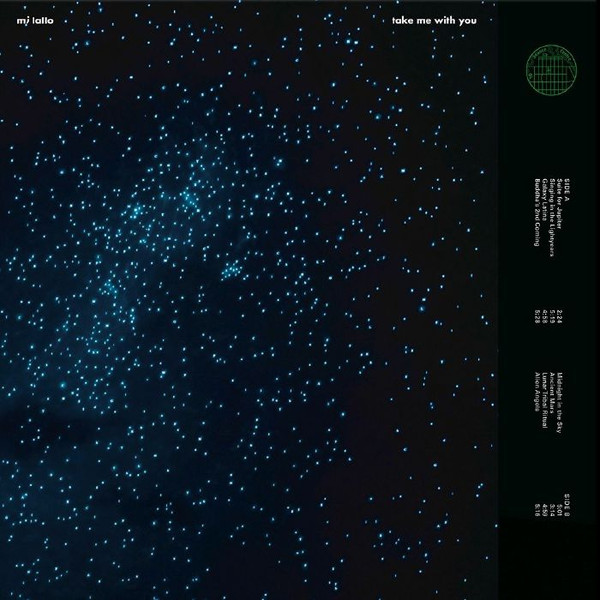ALL RIGHTS RESERVED © CG
Open today: 10:00 - 16:00
1 / 0
MJ Lallo
Take Me With You

Artists
Labels
Catno
10SC
Formats
2x Vinyl LP Compilation
Country
Release date
Jan 1, 2018
Genres
MJ Lallo - Take Me With You | Séance Centre (10SC)
Seance Centre: ...Take Me With You is a revelatory voyage through the captivating universe of voice artist and poet MJ Lallo. The works on this 2LP compilation were all recorded in her home studio between 1982 and 1997, primarily using drum computer, synth and her own voice processed through a Yamaha SPX 90 digital effects unit. They range from wordless harmonizer mantras and primitive drum computer meditations, to psychedelic latin dance-floor anthems and synth-drenched end-of-the-nighters.
Lallo has created her own inimitable galaxy of sound where the human voice, liberated from the constraints of language and abstracted using digital technology, is able to explore the outer realms of human expression, like Joan La Barbara with an Eventide and a new-age sensibility. Although Lallo’s flight path is distinctly her own, her journey converges with other travellers as diverse as Jon Hassell, Laraaji, Stereolab, William Aura, Laurie Anderson, Meredith Monk, Gertrude Stein and even Terry Gilliam (whose film Brazil was a big influence on Lallo). Like something beamed in from another planet, Lallo’s work is both fascinatingly strange and strangely familiar, and will leave a lasting impression for lightyears to come. Double gatefold LP, remastered DMM pressing.
$60*
*Taxes included, shipping price excluded
Sealed copy!
A1
Suite For Jupiter
A2
Singing In The Lightyears
A3
Galaxy Latina
A4
Buddhas 2nd Coming
B1
Midnight In The Sky
B2
Ancient Mars
B3
Lunar Tribal Ritual
B4
Alien Angels
C1
Pleiades Chanting
C2
Sighting Rainbows
C3
Healing For The Heart
Z1
UFO
Z2
UR Dreaming In Slow Motion
Z3
Breathing A Prayer